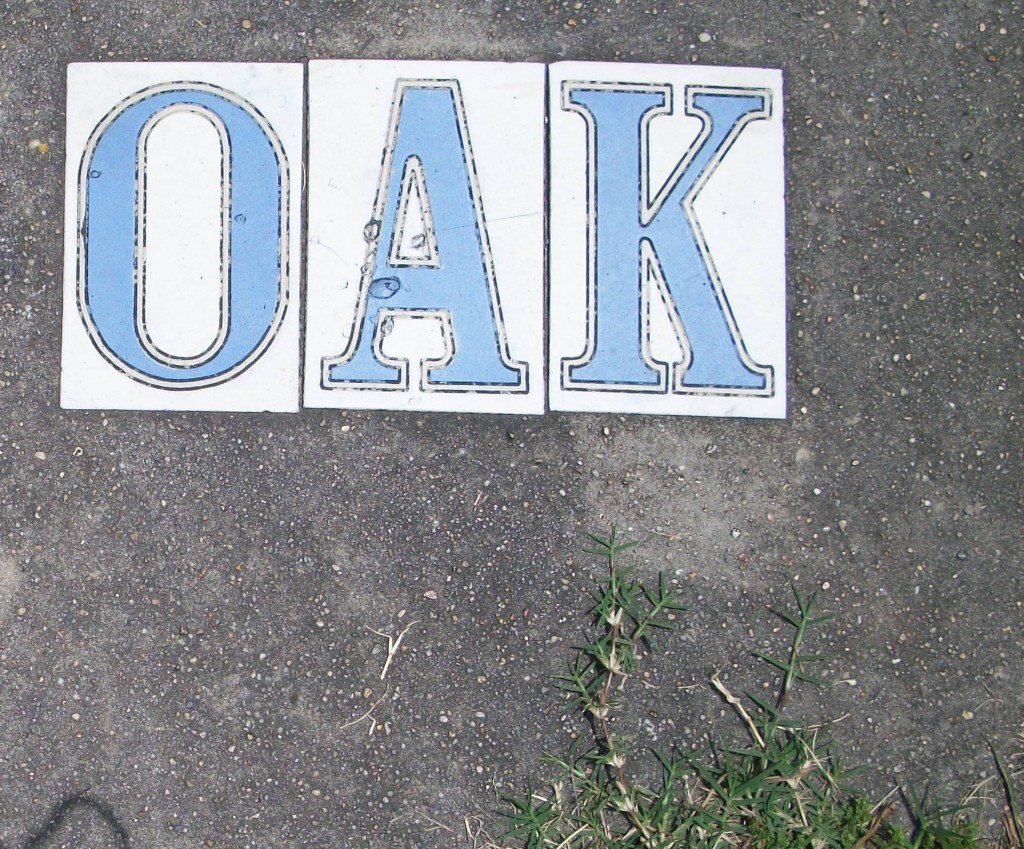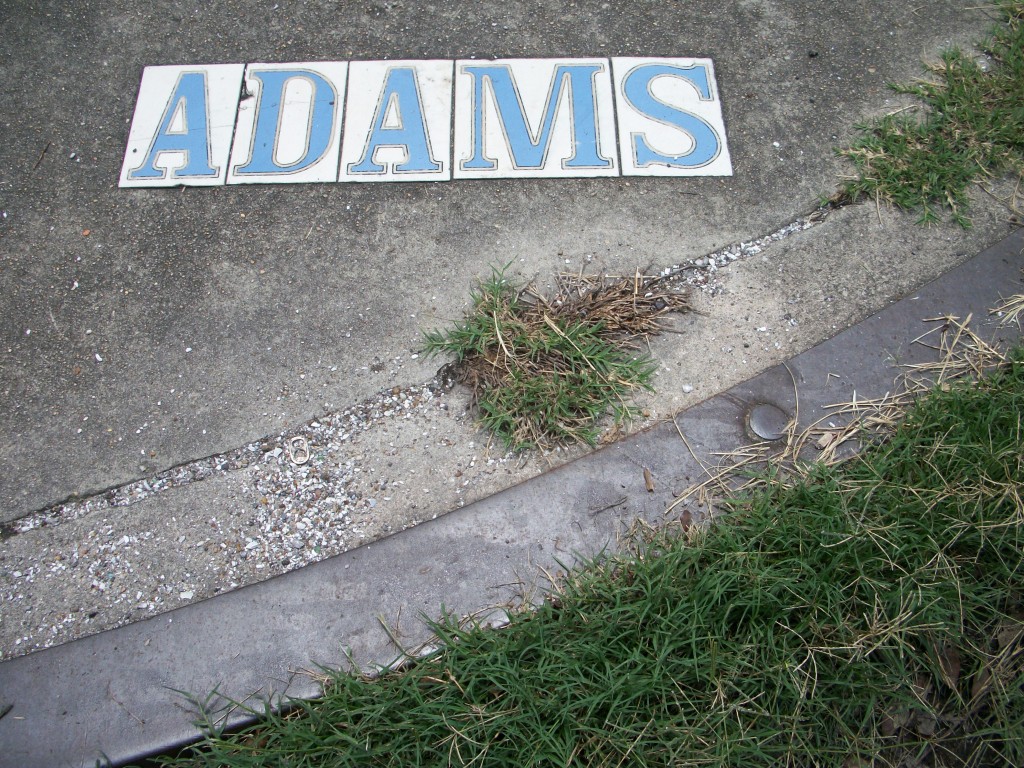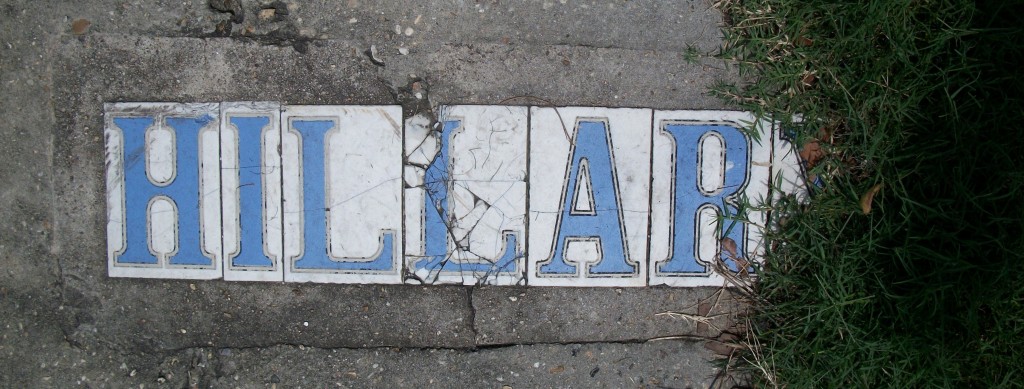In New Orleans sidewalk corners are adorned with delightful blue-and-white tiles, originally dating from the 1870s, telling you the name of the street you are crossing:
As I stepped over some of these, it occurred to met that they told a story about city planning. Unlike the street signs in most cities (including New Orleans) that are attached to poles and displayed high, these can’t be seen by drivers. These are designed for pedestrians, and perhaps bikers, using sidewalks. They reflect a time when planners were designing the city for people on foot.
Lisa Wade, PhD is an Associate Professor at Tulane University. She is the author of American Hookup, a book about college sexual culture; a textbook about gender; and a forthcoming introductory text: Terrible Magnificent Sociology. You can follow her on Twitter and Instagram.



Comments 25
Chris — July 22, 2010
A great piece of New Orleans nostalgia!
Jamie Zawinski — July 22, 2010
San Francisco also has street names stamped into the concrete, at least in the downtown areas. I can't find the reference right now, but I recently read that the reason for this is that after the 1906 earthquake, the streets were so destroyed that it was often difficult to figure out where you were standing, or where your building used to be, so they started embedding street names in the sidewalk to provide some less-fragile breadcrumbs.
Rose — July 22, 2010
In the UK, the vast majority of signs giving road names on streets that have pedestrians are about a foot off street level, except for a few old signs embedded in building walls. I've never seen one actually in the road or sidewalk here. They can be a pain for drivers, especially when you are trying to look for the names of side streets. For residential streets, newer signs often have the postal code on the sign as well.
There are larger, higher up navigation signs mainly for vehicles, but they don't usually have regular street names, just the areas each road heads towards and, if the road is a major one, its category and number. Along main roads they usually have navigation signs giving the category and number of the road plus information like the distances to particular places or service stations.
Pat — July 22, 2010
Reading this blog is an exercise in realizing why sociology is a dying field.
CS — July 22, 2010
Pat, was there any constructive purpose to your comment, or did you just want to express your dissatisfaction that the post didn't meet your personal preferences or tastes? Or are you just looking for people to argue with you and acknowledge your existence? Did it occur to you that this blog isn't intended (nor claims) to be an academic dissertation in sociology, but an opportunity to open dialog about things related (however tangentially) to sociology?
Nola — July 22, 2010
Hey! I live three houses from Oak and Adams. I could have waved. Hope you went two more blocks and got a snowball!
JVLN — July 22, 2010
Obviously the planners were designing the signs embedded in sidewalks for a time when people walk while texting/emailing/skipping songs on their phones. Visionaries! :-)
Carlene — July 23, 2010
Street signs from Victoria, BC; they were put in place in 2000.
Carlene — July 23, 2010
oops, forgot we can't picture comment...
Eric — July 26, 2010
Unfortunately these tiles are deteriorating all over the city. For years, when the city repaired corner sidewalks it would rip up the tiles and not replace them. They're an endangered symbol of New Orleans.
candice — July 27, 2010
Eric, actually there's a slow project going on to replace them; the guy making the tiles had to reverse-engineer the existing ones to get ones that will look right and wear well. There was a cool article about his work in the InsideOut in the paper a few months ago.
Ruimtelijke Ordening — August 31, 2010
I would like to vist new Orleans one day :)
Snelst Afvallen — November 7, 2010
How is new Orleans nowadays?
Massage Hong Kong — January 23, 2011
Poor new orleans :(
lisa — August 18, 2020
You can understand why tiles are popular in kitchens, due to their hardwearing, practical nature and ‘easy clean’ properties. A favorite option is to have a tiled splashback in a kitchen. It makes the entire place look beautiful.tile store
M Styborski — February 8, 2022
FYI, original installation was between the early- to mid-1880s and the late-1920s. Definitely a pedestrian aspect, considering the time period, but also horse and carriage. On horseback there's about a three foot increase to eye level.
City planning, not so much. The tiles were likely an incentive added by cement pavers to win sidewalk contracts from the city.
The examples shown here are from the American Encaustic Tiling Co of Zanesville, OH, and were likely introduced to the city after 1900.
Barry — May 25, 2022
Can someone give me a hint, is tile still fashionable? I'm about to do a little renovation and am thinking about replacing my tile in the bathroom and kitchen. Although my neighbor advises me to just use Tile Reglazing Staten Island. I have read a lot of reviews about this team and many people speak well of them. Many say it will help keep the budget down and update the interior and the quality of the tile. What do you think about it?